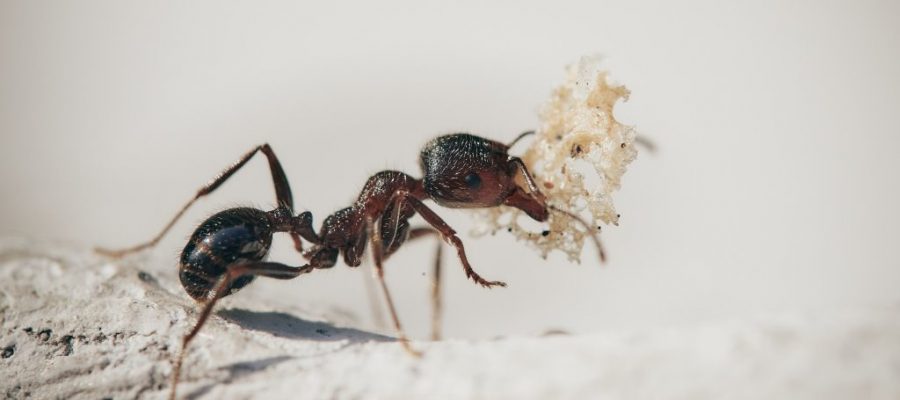What Types of Ants Are in Your Home? An Expert’s Guide
- December 4, 2020
- in Pest Control
- by Ashley Dando

Did you know there are over 12,000 ant species worldwide? It’s enough to make your skin crawl! Australia is home to about 1,200 ant species.
Ants are a nuisance houseguest but they also pose serious problems to Australia’s agricultural industry. Do you have an ant home invasion? Are you wondering what type of ants you’ve got and how to rid your home of this pesky problem?
Keep reading for some information on different types of ants and how to get them under control.
Most people don’t like having ants in the home but there are other reasons for getting rid of them.
Ants are a cause of property damage and also pose a health risk through potential food contamination. Though the risk of food contamination is low, no one wants these pests in the home.
Ants have a negative impact on the outdoor lifestyle of most Australians. Some of the most common types of ants are “tramp ants.”
Tramp ants are ants such as the Argentine, imported red fire, and electric ant. These ants are aggressive – attacking, biting, and stinging. There’s even the risk of anaphylactic shock in some people from ant bites.
Tramp ants can cause billions of dollars of agricultural damage if left unchecked. Did you know carpenter ants remove wood from your home to make their nests? It won’t cost you billions, but it could cost you thousands!
The coastal brown ant and Argentine ant are serious urban pests. Some other common household ant pests are:
Ants are social creatures with colonies that sometimes number in the tens of thousands. If you see a few ants in your home, chances are there are thousands lurking nearby.
Ant colonies grow quickly into an ant infestation, so if you see ants in your house, don’t wait to call an expert. It’s important to identify the ants because sometimes they’re not ants at all but termites.
There are some things you can do to avoid ants in the home. If you follow these instructions and still have ants, it’s time to call in an expert.
Don’t like cleaning the kitchen? You may think twice when you spot a few ants climbing the countertops!
Ants love any type of food they can find, especially sugar and protein. They also look for water. Keep your dishes washed and your countertops free of crumbs and other food debris.
Scout ants look for sugary liquids such as maple syrup and honey. If a scout ant finds something, he takes it back to the nest. Before you know it, there are hundreds of ants climbing up to your counters.
Wipe down counters after every snack and meal. Put all food away in tightly sealed containers.
Like any living creature, ants need water. House ants as well as carpenter ants like moist areas. Dripping faucets and pooling water are magnets for ants.
Check your basement, crawlspace, and attic for any damp areas. Showers with pooling water or rotting windowsills are other areas that attract ants. Identify these areas in your home and eliminate the problem.
Carpenter ants tunnel through wood that’s moist and rotting. Once you’ve fixed the water issues, replace any rotting wood. Otherwise, the area will attract carpenter ants and they’ll cause further damage.
Homeowners sometimes spray a protective barrier around the perimeter of the house. This isn’t the best idea. These sprays wear off quickly, and they’re not good for your health.
The sprays often contain endocrine disruptors. These are chemicals that affect hormones in your body sometimes causing neurological issues such as ADHD.
Ant bait traps are a good alternative to ant spray. Set the traps wherever you see ants. Be mindful of pets and children since these bait traps contain poison.
Try a few different types of traps if you’re not seeing results. Different types of traps attract different types of colonies.
When ants feed on the bait, they also bring it back to the colony. This kills ants within the colony as well as the ants that eat from the bait trap.
It may sound silly but if you see a few stray ants around, simply stomp on them to kill them. These stray ants are often scout ants. By killing the scout ants, you keep them from alerting the colony to the goodies inside your home.
If you’ve done your best but can’t rid your home of the ants, it’s time to call in the pros. They’ll identify the pests and know the best way of ridding your home of the nuisance.
There are a few things you can do in preparation for professional pest treatment. Children, the elderly, pregnant or nursing women, and anyone with severe asthma or allergies should leave the property during the treatment.
If you have cats or dogs, ask a friend or neighbour to take them for a couple of days. Cats and dogs can lick wet pesticides which can make them sick.
Do you have birds, fish, or other caged pets? Remove them from the home as well. Small creatures are sensitive to pesticides.
Birds have sensitive respiratory systems, so it’s especially important you remove caged birds from the home.
If you live close to neighbours, let them know about your treatment in case someone has a sensitivity. It’s possible they’re also having ant problems, so they may want to treat their property at the same time.
There are many different types of ants. Ants are mostly a nuisance but they can cause damage to your home and are sometimes a health hazard.
If you’re having trouble with these pests in your home, don’t wait for the problem to worsen. Tackle the ants using the steps above. If you can’t handle the problem on your own, don’t hesitate to call in a professional.
Need help with your pest problems? Contact us for help!